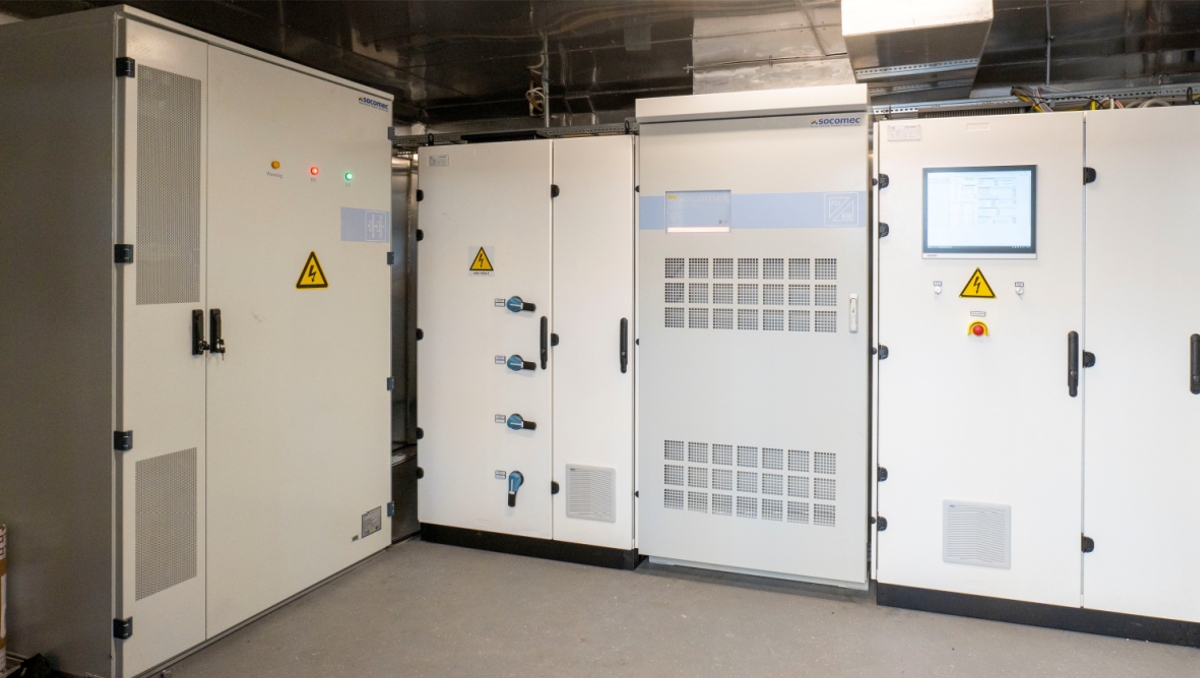Beware! Fireproof battery storages lack regulation

Interest in different types of battery storage is increasing due to big opportunities for property owners, but what about the safety? Regulations are lacking, and Einar Mattsson is participating in several projects in which fire safety is in focus.
Battery storages in buildings are rife with opportunities, everything from storage, backup and/or as a support service on the electrical power market. But what about safety? Incidents with lithium-ion batteries in particular show that fires caused by so called thermal runaway can be very hard to put out. Also, the smoke from such a fire can be highly explosive. In the USA and China, among other places, explosions in battery storages have led to rescue personnel being badly injured and even killed.

– One problem is that battery development is going quickly, while regulations are running behind. Today, there is no national rules or guidelines for how one should build a battery storage with the right fireproofing, says Mikael Dimadis, project supervisor at Einar Mattsson with a focus on sustainability and research.
Guidelines for fireproofing is missing
Einar Mattsson is participating in a big pilot project with support from the Swedish Energy Agency, where they, in collaboration with the battery producer Northvolt and KTH have built a battery room for the 305 student apartments that the company itself owns at KTH Live-In Lab. The purpose is to develop the best solutions for solar panels and battery storage in the housing sector. It became apparent during the work that guidelines were missing for the way the fire protection should be developed.
– We accepted help from the consulting firm Bengt Dahlgren, that had experience with precisely this question and asked them to make sense of the issue, says Mikael Dimadis.
Peter Sellberg is a fire consultant at Bengt Dahlgren. He says that they had to start out by looking at previous investigations, but also by comparing guidelines that existed at the emergency services in greater Stockholm, greater Gothenburg and northern Dalarna.
– We also looked at reports from the National Electrical Safety Board, Lund university, and RISE, and eventually we ended up with a good view of the risks and suggestions of measures.

Ventilate toxic gases
In the case of the Einar Mattsson student property at KTH, the starting conditions were favourable. It was possible to use an old bicycle storage at ground level, which facilitated the moving in of the six tonne heavy battery locker. But a rebuilding of the space, and some technical adjustments, were necessary. Among other things, the room was fire classified accordance with EI60 to close off an eventual fire, and an installation of a fire alarm with a direct connection to SOS Alarm.
– Another important factor was the ventilation system. Separate ventilation with an exhaust fan directly to the outdoors was created with a fire damper on the supply air. This was made to ensure the ability to ventilate the toxic gases that occur during battery fires, but also to minimise the risk of explosions.
Retain contaminated extinguishing water
An additional challenge connected to fire is the handling of extinguishing water. If a battery storage unit starts burning, the effort to extinguish it can become long with large amounts of water. The water that is used becomes heavily contaminated and needs to be taken care of to keep it from entering the stormwater system. In this case, a taller doorsill is needed to keep the extinguishing water in the room until it is possible to pump out.
– At the same time, the ability to bring heavy battery units in and out of the room in a smooth manner is needed. The solution was a doorsill made out of sheet metal with rubber moldings that are easily disassembed, says Peter Sellberg.
Plan for separate battery rooms
Mikael Dimadis of Einar Mattsson is very pleased with the solution for the design of the battery room. But at the same time he says that it would have been a completely different challenge if they had not had the opportunity to use the bicycle storage that already existed at ground level, with a door to the outside.
– At construction, one can plan for separate battery rooms. But lots of already existing properties have solar panels installed which could be complemented with a battery room inside the building. What should be done to ensure security while securing cost efficiency? It is imperative to find out what requirements should hold, given how unregulated this question is today.
Researching fire technical requirements
Precisely this is Einar Mattsson looking into right now, in a new research project together with Bengt Dahlgren and KTH Live-in Lab, among others. The purpose with the project is to investigate which fire technical requirements that should be demanded of battery storages, and how these should be handled in a cost efficient manner, in conjunction wiht other requirements. Simultaneously, there are different types of batteries and also different purposes with the battery storage – some property owners focus on self-sufficiency, while others want to be able to make money off of being a part of the ancillary services market. These are two completely different types of charging that can have an effect on security.
– That is why we wish that fire protection requirements were developed that builds on functional recommendations based on different scenarios, rather than detail requirements that are supposed to hold for everyone, concludes Mikael Dimadis.
Text: Pernilla Fredholm
redaktionen@forvaltarforum.se
This article was originally published on forvaltarforum.se
